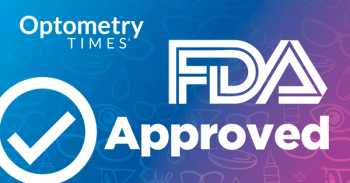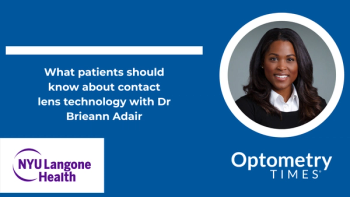
Telemedicine in optometry: Is it inevitable?
Telemedicine is finding a place for itself in optometry, but should ODs allow it more room?
Should optometrists (ODs) embrace the rise of
Dr. Mike Rothschild, OD, of Leadership OD, posed these questions at Vision West Expo 2019 in Las Vegas.
It is no secret that telemedicine is a hot topic in optometry. ODs are turning to technology to improve patient access to care, healthcare delivery speed, and patient satisfaction overall. Dr. Rothschild sought to address the trends-as well concerns-that will shape the future of telemedicine in optometry.
The benefits of
“About 70 percent of Americans, all age groups, are willing to see a doctor remotely,” he says.
And the use cases for telehealth are growing, in turn.
“Stroke and radiology are the big topics right now,” Dr. Rothschild says.
He recounted a past experience in which a patient was quickly diagnosed with a stroke through a virtual telemedicine consultation, ending in a positive outcome.
“All of us know that early intervention in stroke care is the most important piece of it,” he says.
Through strategies like these, telemedicine has the potential to be used for life-saving applications.
Dr. Rothschild detailed several other advancements, one of which is the remote monitoring of intraocular pressure (IOP). This tool has the potential to improve healthcare delivery by distributing continuous, consistent care.
For example, Dr. Rothschild described how one such tool could track a patient’s IOP and automatically alert her if and when her pressure levels grew too high.
And though the technology is still new, these advancements and those like it are being supported by new Medicare codes-something Dr. Rothschild notes is a good sign for adoption.
“The fact that Medicare is creating these kind of codes means that it is starting to come,” he says.
However, not everyone is on board.
Addressing telemedicine concerns
Both patients and optometrists have concerns about the push for telemedicine. Dr. Rothschild described three primary concerns voiced by those unwilling to try telemedicine:
Preference for face-to-face appointments
Lack of confidence in the
Hesitance over concerns if insurance will pay
“Those are the kind of things that are worrying the people who are not ready to jump on this yet,” he says.
Patients are not the only ones with concerns about the rise of telemedicine. There are blind spots within the approach that doctors are taking note of. Dr.
Rothschild detailed several problems heard from clinicians:
Health Insurance Portability and Accountability Act (HIPAA) compliance
Guaranteeing payment from providers
Ensuring that patients understand the service
Addressing these apprehensions will involve coordination from entities like Medicare alongside optometrists. Dr. Rothschild noted that
“What we have to do better is focus on the relationships,” he says.
It is important for ODs to help patients understand that the doctor they will be seeing is not the doctor they are used to. ODs also need to educate patients on available tools to help facilitate their transition into tech-enabled healthcare.
Across virtual appointments, interactive exams, screening applications, and other tools, this push has as much potential benefit for optometrists as for the patients themselves.
“This is a good antidote for provider burnout,” Dr. Rothschild says.
The application of telemedicine can reduce the burden on an overworked OD in part by helping with prioritization in the clinic and in part by serving patients through online contacts and video conferencing rather than traditional, in-person exams. ODs can give what limited attention they have to the most pressing cases while leaving less-critical tasks to others, thus optimizing their practice overall.
“We can focus on the acute concerns...the routine stuff may be happening next door or across the hall,” he says.
So, while the outlook of
“Some of the time, a doctor has to be there for the stuff that can’t be done online,” Dr. Rothschild says.
Newsletter
Want more insights like this? Subscribe to Optometry Times and get clinical pearls and practice tips delivered straight to your inbox.



















































.png)


